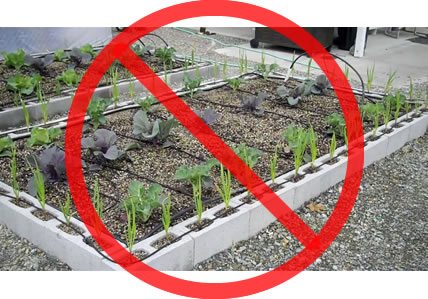
The Ultimate Guide to Cinder Block Koi Pond Construction
The Beauty of Cinder Block Koi Ponds

Koi ponds serve as a wonderful addition to any backyard or garden, creating a peaceful and calming environment. They’re the perfect haven for koi fish, who are known for their colorful and vibrant patterns and calming presence. However, building a koi pond can be a challenging and expensive project. Fortunately, using cinder blocks is an affordable alternative that doesn’t compromise on quality or beauty.
The Advantages of a Cinder Block Koi Pond
Cinder block ponds are an excellent option for those who want to build a durable, long-lasting pond without breaking the bank. They’re highly resistant to weather elements, ensuring that your pond will stay intact and beautiful for many years to come. Moreover, cinder blocks are quite versatile and easy to work with, making them an ideal choice for a DIY project.
Step-by-Step Instructions for Building a Cinder Block Koi Pond
1. Planning and Design
The first step in building a cinder block koi pond is to plan and design your pond. Determine the size and shape you want, the location, and any extra features you’d like to add. Keep in mind the landscape, sunlight, and shade for the koi and any aquatic plants you might want to include. Consider electrical sources if you plan to add lighting and a filtering system.
2. Excavation
Once you’ve settled on a design, start digging. Be sure to clear the area of any rocks and debris to avoid puncturing the liner. Dig the hole at least a few feet deeper than the intended depth of the pond, including a shelf of at least 8-12 inches deep around the edge of the pond to add plants and rocks.

3. Base Preparation
Next, prepare the base of your pond. Lay down a layer of sand, creating a smooth and level area for your cinder blocks. The sand provides cushion for the liner while also preventing rocks from puncturing through it.

4. Building the Walls
Now you can start building the walls. Place the cinder blocks tightly together and level them using a spirit level. As you stack the blocks, make sure they are interlocked by either stacking them lengthwise in an alternating pattern or using a bonding agent.

5. Liner Installation
After the walls are constructed, it’s time to install the liner. Use a flexible liner made of PVC or EPDM, which can tolerate temperature changes, punctures, and UV damage. Be sure to purchase a large enough liner and leave at least a foot of overhang around the edge of the pond walls.

6. Finishing Touches
Once the liner is in place, add additional cinder blocks or stones to hide the edge and provide a decorative finish. Arrange rocks and stones around the edge to create the desired aesthetic. Be sure to test your water to ensure it is safe for your koi by using chemical monitoring kits.

Maintenance and Care
To keep your cinder block koi pond in pristine condition, establish a maintenance routine. This includes regular cleaning of the pond, removing any debris or excess fish food, and testing the water frequently. Also, be sure to add new filtered water periodically, and remove some of the pond water if the water becomes overloaded with waste and debris. Your koi pond will provide a peaceful oasis in your backyard with proper care and maintenance.
Conclusion
Building a cinder block koi pond can be an exciting and rewarding DIY project that brings beauty and harmony to your backyard. With careful planning, preparation, and care, you’ll create a stunning pond that reflects your style and personality. Follow these steps, add your personal touch, and enjoy the peaceful presence of your koi fish and the tranquility of your new pond.